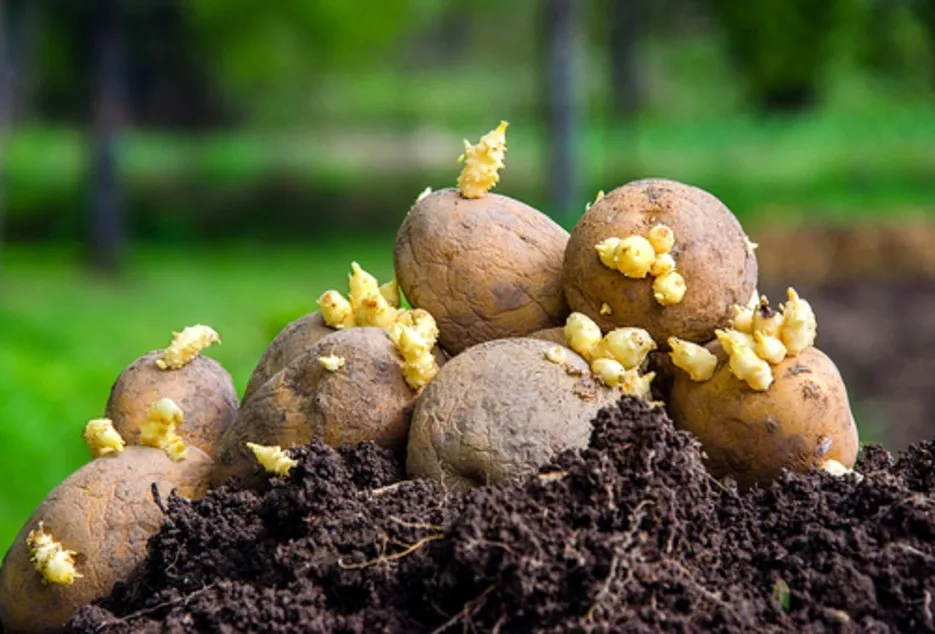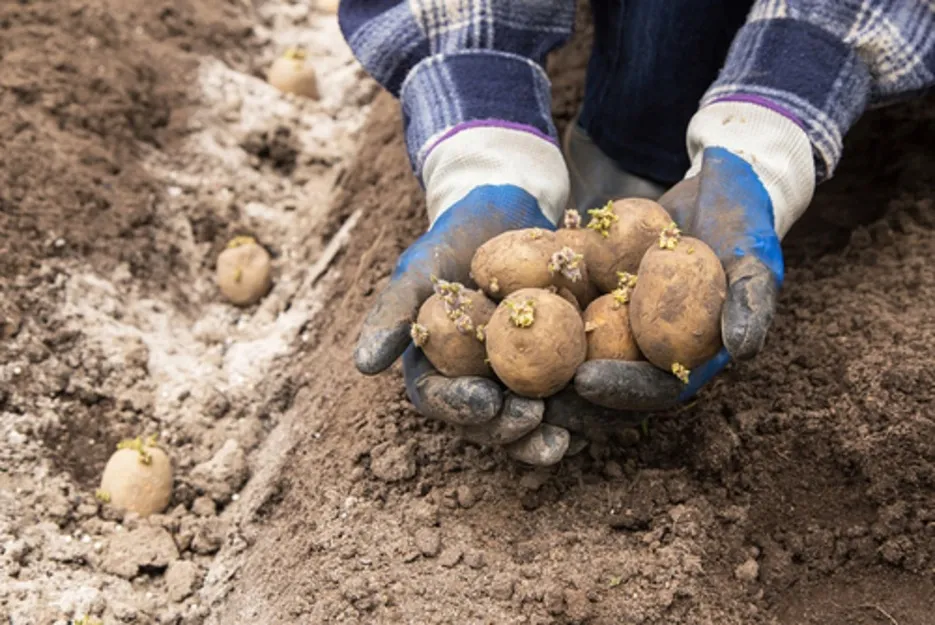 Back
Back

.
.
Potato is one of the most important food crops in the world. Known as the “poor man’s friend” potato acts as a rich source of starch, vitamins especially C and B1, and minerals. PIn 2018-2019, the total area contributed to potato production in India was 2.17 Million Hectares, with a total production of 50.19 Million Tonnes. Though the product is primarily consumed as vegetables, the potato has immense potential in agri-processing sectors like potato chips, French fries, potato flakes, etc., the market share of which is projected to increase manifold by 2050. Currently, the productivity of potatoes in India is estimated at 23 tonnes/ hectare.



How to choose the best variety
How to choose the best variety
These are popular varieties cultivated in India
➥ Early duration (70 to 90 DAS): eg. Kufri Pukhraj, Kufri Chandramukhi, Kufri Ashoka
➥ Medium duration (90 to 100 DAS): eg. Kufri Jyoti, Kufri Anand, Chipsona 1,2,3 (for potato chips)
➥ Late duration (110 to 130 DAS): eg: Kufri Giriraj, Kufri Sinduri
Planting Season
Planting Season
In India potato is cultivated in Rabi (October 3rd week to November end). Ideal planting time is when the average maximum temperature ranges from 30 to 320 C and the average minimum temperature is 18 to 200 C.


Field Preparation
Field Preparation
Key objectives during field preparation Soil conditions during planting should be optimized to support rapid plant emergence (less risk of seed rotting, better use of growing period) Deep root development for better water and nutrient uptake. Proper drainage of the soil. Removing clods that delay emergence and hinder mechanical harvesting.


Overview of tillage practices
Overview of tillage practices
Prepare the land well by bringing it to a fine tilth by 1 or 2 deep ploughings followed by Harrowing and cross cultivation using a cultivator. For potato cultivation either the Ridges and furrow system or Raised Bed system can be followed.


Seed tuber Requirement
Seed tuber Requirement
Always use certified seed tubers. For planting, tubers weighing 50 – 60 gm are preferred. If tubers are large cut them vertically so that sprouts are distributed on either side. Cut tubers must have at least 2-3 eyes on each side. Tubers showing scab, wart, nematode infection, rots should be sorted and discarded Seed Rate: 600 to 800 kg/acre


Seed tuber Pre-sprouting (chitting)
Seed tuber Pre-sprouting (chitting)
For plantation purposes, potato tubers after being removed from cold storage are kept in a cool and shady place for one to two weeks to allow the emergence of sprouts. Keep seed tuber bags in pre-cooling chambers of the cold store for 24 hrs before taking them out. To get uniform chitting, treat tubers with Gibberellic acid @1 gm/10 ltr water for 1 hour then dry in shade and keep the seeds in a well-aerated dim room for 10 days.
Seed tuber treatment with Emesto Prime ®
Seed tuber treatment with Emesto Prime ®
Treatment with Emesto Prime ® offers durable resistance against Black Scurf (Rhizoctonia solani) Farmers can achieve high yield along with uniform, good quality harvest by applying Emesto Prime ® before sowing. #After cutting the seed tubers, place the tubers on a polythene sheet. #Mix 100 ml of Emesto Prime ® with 4-5lt of water to create a solution. #Spray the solution over the seed tubers. #Let the seeds dry for 30-40 min under normal conditions and proceed to the sowing of dry seed tubers.


Sowing depth
Sowing depth
Tubers should be placed at a depth of 5cm. Shallow planting due to improper ridge construction and sowing depth leads to green tubers, limited root development, misshaped tubers from temperature fluctuation, late blight, and tuber moth attack.


Planting and crop establishment
Planting and crop establishment
Seed tubers can be sown on ridges 30-40 cm wide, created in an east-west direction. Open furrows 60 cm apart to allow the formation of ridges at the same distance. Dibble the seed tubers on the ridges at seed to seed distance of 10-15cm. Give a light irrigation one day before planting followed by one more light irrigation after planting. Proper ridge construction prevents light exposure (green tubers); offers protection against high temperature, potato moth infestation, weed competition and promotes plant development.




Intercultural operations
Intercultural operations
Two earthing-up operations are practiced to prevent tuber exposure, which otherwise results in the greening of the tuber. The first earthing up is done approximately 20 – 25 DAP. Second, earthing up is done about 40 – 45 DAP. Inter-cultivation protects the crop against tuber moth, green tuber formation, and competition against weeds.


Harvesting
Harvesting
Harvesting is done when haulms show signs of senescence or physiological maturity. During which the haulms are removed and tubers are harvested. For early harvest to fetch remunerative market price or seed purpose production, haulms can be removed to stimulate tuber maturation. Irrigation should be stopped 7-10 days before cutting haulms. Harvesting can be done manually or using a tractor or bullock-drawn potato digger. In general, the potato yield varies from 12 to 15 tons per acre depending upon crop management.


Thank you for reading this article, we hope you clicked on the ♡ icon to like the article and also do share it with your friends and family now!










